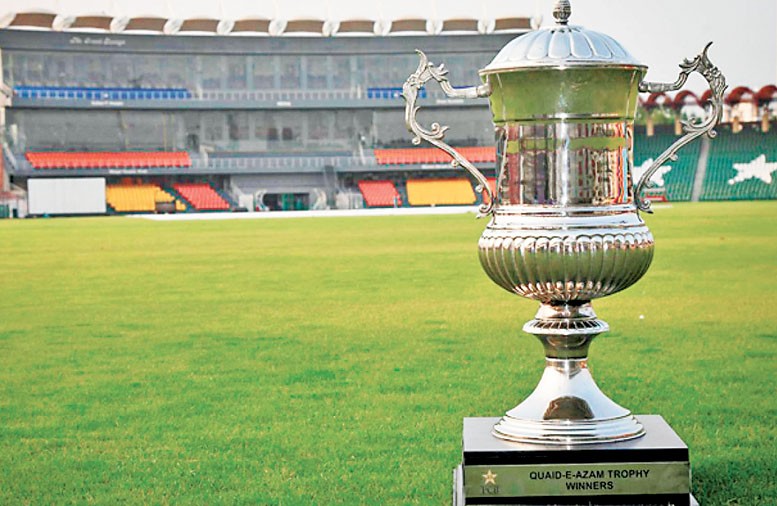
The positives and the negatives of the new domestic cricket format

When this piece appears it will be the second day of the first round of the country’s premier cricket event, the Quaid-e-Azam Trophy. And the event will be more interesting than before as only six outfits instead of formerly 16 will fight for the coveted title.
There are two teams from Punjab, the country’s largest province, one team each from the other three provinces and the federal team, representing the twin cities Islamabad and Rawalpindi.
I would like to point out some positives and negatives of the system. The start has been impressive. The best players of the country are in line either to play first-class cricket or become part of the Second XI. One of the biggest pluses of the system is that it leaves no room for corrupt practices. I have learnt that in the last season around 102 players were given the opportunity to play first-class cricket although they did not deserve as they before had played one or two first-class matches.
Associations used to manipulate things and bring in ordinary players.
The new system offers a viable way of promotion and relegation of players and not teams as happened in the past. As the competitions of both the First XI and Second XI will be held almost simultaneously, it will offer an ample opportunity to the cricketers in the Second XI to press for a seat in the First XI in the same season through their performances in the Second XI event.
After interacting with sources in various provinces I have come to the conclusion that very few deserving cricketers have not been able to make it among the 32 those who will be offered monthly remuneration of Rs50,000 for the whole year.
"I don’t think any deserving player has been left out in our province. Yes, there are two or three players who needed to be included in the two sides," a well-placed source in a provincial association told me.
High-quality cricket is expected this season as only leading cricketers will get the chance to play first-class cricket.
It was the dream of Prime Minister Imran Khan to abolish departmental cricket and bring in such a system which carries only regional sides. Imran, a former Pakistan captain, strictly ordered the officials concerned to implement his plan. The Pakistan Cricket Board (PCB) exactly did that.
Except Northern Areas and Balochistan, the teams will have only the local boys which will give the events a truly regional colour. This factor will help attract crowds as people will identify themselves with their regions. But pulling a crowd for the four-day cricket is not an easy job. The PCB will have to work harder and use different tactics to attract people.
Television coverage is absolutely necessary for the promotion of cricket. If teams hire one foreign player each as allowed then it could further help the organisers create attraction for the crowd.
But personally I feel crowd is not expected to witness four-day cricket. This is an era of T20 blasts. People think it is waste of their time watching four-day or even domestic one-day cricket, even if there are international stars.
Even the crowd in the initial few matches in the PSL here in Karachi early this year was disappointing.
It was only near the end when thick crowds were witnessed even if Karachi Kings were not there. The points system which has been put in place by the PCB for this season will compel the teams to play aggressively.
If both sides play aggressive cricket in the 110 overs of their first innings, they will secure more points. And this will work, I feel. Cricket in these overs will really be mouth-watering.
The use of Kookaburra balls will also add to the quality of cricket. But it is equally important that the umpiring is high quality.
The PCB claims that it will spend around Rs1 billion to conduct tournaments this season. It has also been announced that the winners of the Quaid-e-Azam Trophy would take away Rs10 million. The PCB also claims that a top-level cricketer will earn up to Rs2.5 million during the season.
But there are a few negatives, too. Abolishing departmental cricket will affect the local cricketers financially. Cricketers, who had been given jobs by departments, will lose jobs. It will be a huge financial loss for them. Only a few top cricketers will earn up to Rs2.5 million, not everyone who is among the 32. If a player, who used to get a salary of Rs150,000 from a department, gets injured, misses the whole season, how will he provide for his family through the meagre amount of Rs50,000 which the Board will give him?
In a populated country like Pakistan there was no need to bring in such a system as it may affect the financial security of most of the players in the long run.
The abolition of departmental cricket may also affect other sports disciplines, particularly football. The Asian Football Confederation (AFC) club licensing regulations have already created a great chance of dismantling of the administrative system through which departments govern their football.
There is no doubt that this is the era of the corporates. The bigger the input of the sector will be, the greater will be the chance of keeping sports flourishing in Pakistan.
I pray for the success of the current cricket system imposed by the top authorities but the decision to abolish departmental cricket will discourage many who want to adopt cricket as a career.